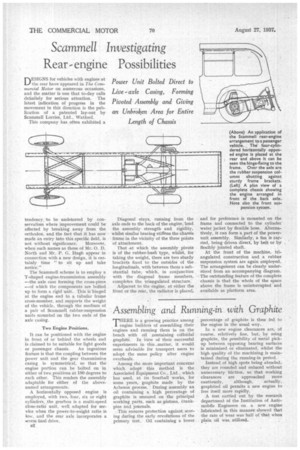Assembling
Page 36

If you've noticed an error in this article please click here to report it so we can fix it.
and Running-in with Graphite FrilERE is a growing practice among 1 engine builders of assembling their engines and running them in on the bench with oil containing colloidal graphite. In :view of their successful experiments in this _matter, it would seem advisable for transport users to adopt the same policy after engine overhauls.
Among the more important concerns which adopt this method is the Associated Equipment Co., Ltd., which has used, at its Southall works, for some years, graphite made by the Acheson process. During assembly an oil containing a high percentage of graphite is smeared on the principal working parts, such as .pistons, crankpins and journals.
This ensures protection against scoring during the early revolutions of the primary test. Oil containing a lower
percentage of graphite is then fed to the engine in the usual way.
In a new engine clearances are, of course, relatively fine, but, by using graphite, the possibility of metal pickup between opposing bearing surfaces is minimized or eliminated, whilst the high quality of the machining is maintained during the running-in period.
Instead of high spots being abraded, they are rounded and reduced without unnecessary friction, so that working clearances are approached more cautiously, although, actually, graphited oil permits a new engine to free itself more rapidly.
A test carried out by the research department of the Institution of Automobile Engineers on a new engine lubricated in this manner showed that the rate of wear was half of that when plain oil was utilized.




















































































